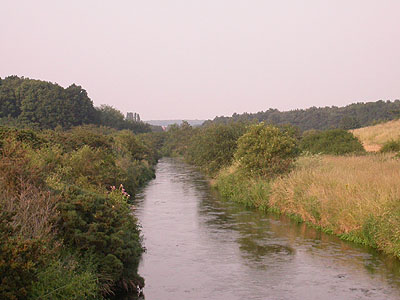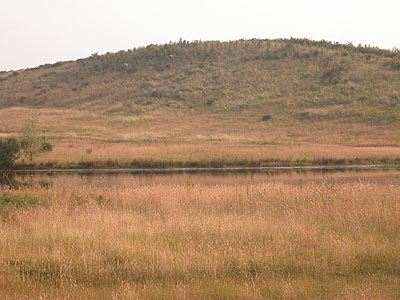

| Bevercotes Pit Wood Centred at SK701737 |
| Situation Bevercotes Pit
Wood is found off the B6387, east of Bothamsall and
adjacent to Lound Hall. Parking and access Turn off the B6387 at approximately SK 696 734 and drive down the access road towards Lound Hall. Go over the large hump-backed bridge past the old pit site and over the smaller bridge which spans the River Meden. Park in the second layby on the left and access the pit top (now known as Bevercotes Pit Wood) from there. Paths are broad and walking is relatively easy for a pit top site. Description and habitat A former pit top site which has been landscaped to create some superb habitat and now forms the newly planted Bevercotes Pit Wood. The Rivers Maun and Meden both flow through the site and there are some areas of mature, mixed woodland. Areas of water provide excellent dragonfly habitat |
 |
|
| ..... | ||
| Wildlife A visit by dragonfly enthusiasts is recommended, but there should be something of ornithological interest to encourage a second or even more frequent visits by most birdwatchers. | ||
| ..... | ||
Moths Huge numbers of Shaded Broad-bar can be disturbed from the grass and the site would definitely warrant regular trapping sessions. A number of uncommon Nottinghamshire species have been recorded. Butterflies All the common species are present, with records of Brown Argus since 2006 July 2006. Dingy Skipper is likely and possibly Grizzled Skipper one day. Dragonflies Recent counts (early July 2006) included five Emperor Dragonfly, three Four-spotted Chaser, 50+ Black-tailed Skimmer. Azure, Blue-tailed and Common Blue damselflies are found in good numbers. Summary The site is incredibly quiet and seems very rarely visited or used by the public. Probably this is because it is not signposted from the road or publicised. We were recommended to visit by Bob Stevens a few years ago and would urge more people to do the same and were surprised that such excellent habitat had remained so quiet and infrequently visited. Well worth a visit during the Summer months for its insects. |
 |
|